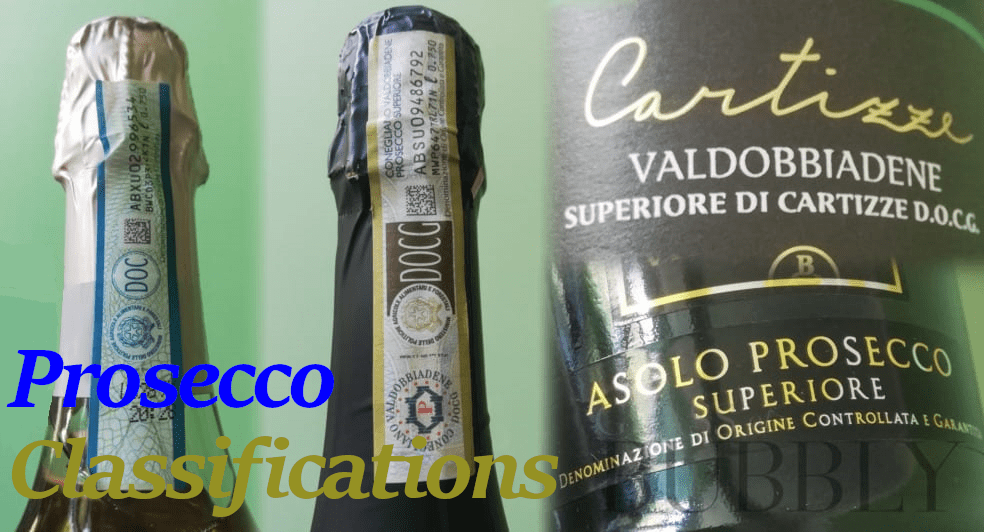Prosecco Classifications
18th January 2023

The main recognisable levels of Prosecco come in the form of a label around the neck of the bottle, the standard level is a light blue label stating ‘DOC’ and the higher quality comes in a brown label stating ‘DOCG’.
What Do DOC and DOCG Stand For?
DOC stands for ‘Denonimazione di Origine Controllate’ and DOCG stands for ‘Denominazione di Origine Controllata e Garantita’.
That’s not all, DOC and DOCG are the main ways to tell the different levels of quality, but there are some extra words that can be found on the label, that help you identify the levels of Prosecco.
DOC – Prosecco – DOC Prosecco is grown on the flat Vineyards of Prosecco, as of 2020 Prosecco DOC had 24,450 hectares of vineyards with 1,169 winemakers and 347 Prosecco houses. Rosé Prosecco comes under the DOC classification.
DOCG – Prosecco Valdobbiadene Superiore – All DOCG Prosecco is produced from grapes grown on hillside Vineyards and are only handpicked, this area is between Valdobbiadene and Conegliano
DOCG – Asolo Prosecco Superiore – Considered to contain a finer terroir to grow grapes.
DOCG – Prosecco Valdobbiadene Superiore Rive – Only 43 communes can be labeled as such.
DOCG – Prosecco Superiore di Cartizze – Only 265 acres are within the Cartizze area of Valdobbiadene, it is considered the best terroir in the Prosecco Region.
In 2020, 500 million bottles of Prosecco DOC were made, turning over an estimated 2.4 billion euros. Villa Sandi, one of the Proseccos which we tasted with Neil Phillips, turned over 121 million euros in 2021, which was an increase of 33% from 2020.
![]()
Oliver Walkey
Champagne and Sparkling Wine Writer, Focused on Bringing the Exciting and Fascinating World of Bubbly to You.
